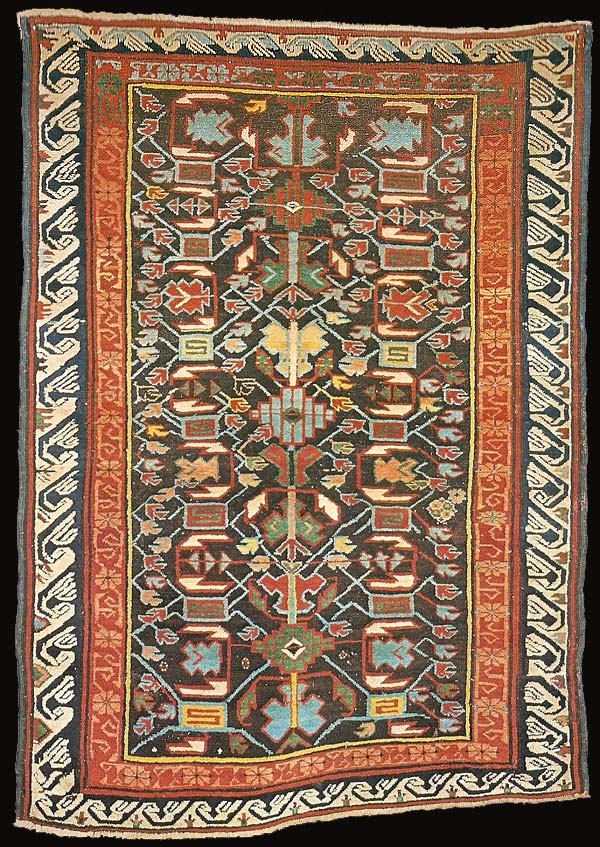|
54. KUBA SEJSHOUR
19th century, 4'9" X 3'5" (m. 1.47 x 1.06)
Warp; wool
Weft: wool, two shoots after each row of knots
Knotting: Ghiordes, wool, 88 knots per square inch [1300 per dm.2]
This piece has the pleasing primitive force of many rugs not woven according
to type. Like the rug in Plate 55, it is rather unusual in its black
background and noticeable Chinese influence. Sejshour was no closer to China
than any of the rest of the Caucasus, but somehow it seems to have been
influenced more by Chinese designs. It is also distinguished by the
unusually strong blue seen through the design. Like the rug in Plate 52, it
has a strong linear design through the center that is composed of
butterflies and stylized flowers. The "S" in the squares is a stylization of
the Chinese cloudband. The figures in the field are blue, red, white, green,
yellow, and pink. The outside border is white and dark blue, while the
inside is pink and red, both characteristic.
Although this rug can certainly be called a geometric piece, it is dominated
by squares and straight lines rather than angles. It has a somewhat coarse
appearance, probably because the pile is so high.
published at Luciano Coen & Louise Duncan's The Oriental Rug
 |
